Carl E. Olson's Blog, page 187
November 1, 2012
Introduction to Adrienne von Speyr's "The Book of All Saints"

Introduction to Adrienne von Speyr's The
Book of All Saints | Hans Urs von Balthasar
This work came into being over the course of several years, as new portraits
were constantly added on occasion or at my own request. In the beginning,
Adrienne was shown individual saints during times when she was not at all
thinking of these particular people. For the most part, they were shown in
their general disposition and, then, often in prayer that was particularly
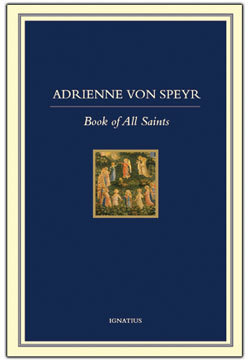
characteristic of them. Adrienne was each time able to reproduce their
disposition when we recorded the dictation, and the words they spoke in prayer
were given to her again during the dictation. Once the dictation was over, she
would most often completely forget what she had seen and heard, as always was
the case when Adrienne had "settled" something in obedience and put
herself at the disposal of a new task.
In the first period, she was also often given the vision of a saint during the
night while she was at prayer, and she would report to me the next day that she
had seen this or that saint, asking whether she could tell me about him or her.
Frequently, she would be shown the essence of the person she saw without
knowing exactly what the person's name was. Once she said, "Today I have
seen Gregory." "Which one?" I asked. She confessed that she did
not know there was more than one; she had no idea which person it was with whom
she had interacted. I asked her then to begin, and after just a few sentences
it became clear to me that it could have been none other than Gregory
Nazianzen, as the section in this book will confirm. Later came Gregory the
Great and Gregory of Nyssa to join him.
Another time she said to me, "Today I received Catherine", and to my
question, "Which Catherine?" she could only say, "Not the one
from Siena; I know her." With the description, I guessed that it must have
been Catherine of Genoa, whose life I myself had never read; a subsequent
comparison with her biography and especially a comparison of the prayer with
the account of the visions Adrienne had received gave me the certainty that it
could have been no one else.
Later, the choice of the saints that were to be described was increasingly left
to me. At first, I would jot down names for myself on a scrap of paper, and it
might happen that, when I placed the paper before Adrienne, she would
immediately say, "I can do this one." Another name she might take
with her into her nightly prayer and then describe him to me on the following
day. Later, I was able to request from her whatever saint or special
personality I wished: a brief prayer would transpose her to the
"place" of vision, she would close her eyes, look for a moment in the
Spirit on what was shown her with intensity and inner excitement, and then the
description would begin, slowly at first, in very clearly stamped words, and
then more quickly, without the slightest hesitation, making new judgments with
every sentence. Those who were still alive, and whose fate still lay in their
free decision, were not shown, or (as, for example, with Therese Neumann) only
in very brief glimpses. The definitive text on the little "Resl",
[13] as well as on John XXIII, were written only after their deaths.
Adrienne had either no knowledge or just a glimmer of an idea about the
majority of the personalities whose names I presented to her. Quite often the
outcome of her description took me completely by surprise; I had expected
something altogether different. I also presented her with names that were for
me nothing more than names; I got some of them from a list of people who had
received the stigmata, [14] above all, in order to see what sort of piety or
attitude in each case lay behind the phenomenon; a few names were taken from
the book by P. Herbert Thurston, [15] behind whose purely psychological and
physiological descriptions the properly religious and Christian destinies and
decisions remained hopelessly hidden and unrecognizable.
What might the truth be, one wants to ask, about a Maria Castreca or the
enigmatic Maria de la Visitación? In most cases, I did not verify the answers
with documents that may finally have come to my attention; but the things that
were shown, which were always extremely precise and bore a unique personal
quality, already arranged the individual and disconnected traits into an
internally plausible portrait.
It is important for the reader to bear in mind that the only thing intended to
be shown here is the particular person's prayer and attitude toward prayer in
relation to God. This attitude can in some cases be considerably different from
the person's other achievements in the world and also for the Church (as, for
example, the surprising and indeed shocking portrait drawn of Thomas Aquinas
shows). The degree of integration between inner life and external work can vary
quite significantly in the different saints, as we see, for example, in the
description of Gregory of Nyssa.

Particularly in the earlier periods of this work, Adrienne possessed an
altogether extraordinary need for purity and transparency. Each time, she would
ask, almost with anxiety, whether she was in fact "clean enough",
whether I was able to see perfectly through her soul. She preferred to go to
confession every time before she undertook this work, desirous as she was to be
in every case in a perfect state of confession. In this regard, she dictated to
me the following sentences:
As long as a person lives in this world, he always clings in some sense to the
things that belong to him. In confession, by contrast, a person must set the
things that belong to him free; he must let the world go; he must bring forth
everything and hand it over to the Church. He must become like a child. Then a
person can allow everything God wishes to pass through him. Everything the
Spirit says. But in confession a person gathers together all his sins, 'as God
sees them'. He becomes dispossessed of his own judgment over himself in order
to leave judgment to God alone. Only when a person leaves judgment to God alone
can he, when he is shown a saint, say how it is that the Holy Spirit sees him.
The Holy Spirit's judgment often turns out to be different from what the saint
himself expects. For this reason, it can happen that something is shown of
which the saint and those around him were scarcely aware; the Spirit
underscores certain things that he takes to be important in the saint's soul,
whether they be positive or negative.
The state of confession, in which Adrienne sought to remain, means: pure
openness and readiness, the whole of the soul being nothing more than a
photographic plate, able to take up and reproduce anything that is given to it,
just as it is given. If this purity were not there, according to Adrienne, it
would not be possible to see "how much of what was given belonged to the
saint himself and how much belonged to me. In fact, it would disproportionately
increase precisely what I had kept of my own, hidden in myself, in the
transmission of what came from the other, and would thus make the objectivity
of the portrait impossible."
The more absolute the obedience demanded was (and here it was truly demanded in
an absolute sense), the greater would be the guilt if someone wanted to keep
something hidden. It is clear, however, that such an "experiment"
could be performed only with a soul that had been completely purified. The
complete self-effacement that was demanded has of course nothing in common with
Buddhism and Zen; it is a pure work of Christian love; it is the highest
possible approximation to the Church's attitude as the Bride of Christ, in
whose bosom and spirit all the saints and those who pray find their shelter. It
is the attitude of the soul that has been known, since Origen's time, as the
anima ecclesiastica, the ecclesial soul,
[16] it is the perfection of the Ignatian sentire cum Ecclesia.
Adrienne takes the prayers of the saints and other believers into her soul
through a perfect reenactment of them. That is why she occasionally shows some
awkwardness when she has to reproduce an imperfect prayer: she herself would
have preferred to pray a different way. Or, if the prayer contains traces of
vanity (as, for example, in Gregory Nazianzen), she feels afterward somewhat
stained. On the other hand, she feels personally enriched by all the things in
the prayers that are good. She receives all of this with her own "organ of
prayer". If she herself had not prayed so much, she would not have been
able to transmit any prayers, and if she did not herself have some experience
of everything that appears in all these prayers, she would also not have been
able to reproduce them. Nevertheless, she was not permitted to be anything but
an instrument in the moment of transmission. Moreover, she was not able to
carry through these transmissions in the presence of anyone but her confessor,
because the whole was a work of obedience. [17]
If, on Adrienne's part, it is a work of obedience, then on the side of the
saints it was a work of humility. Of a heavenly humility that does not shy from
displaying itself before the earthly Church in an unshielded attitude of
confession. If Péguy considers public confession to be an indispensable
principle of the earthly Church," how much more validity it holds for the
heavenly Church, where nothing private exists anymore! The examples will show
that nothing happens outside of love and discretion, for the sake of mere
curiosity, and that everything that is shown is an aid in some sense to
Christianity on earth.
The various series came to be at different times. In the first series, one
finds sections included that occurred at a later date. The series dealing with
the threefold attitude and the series with the recited prayers came into
existence within the space of a relatively brief period of time. When Adrienne
had finished her description, I was given the freedom to ask questions in order
to fill in some blanks. These questions, or the answers to them, can be recognized
in the text because they are preceded by a line space. It is significant that
Adrienne, who was doubtless in a form of ecstasy, nevertheless heard the voice
of her confessor by virtue of her obedience, understood his questions, and was
able to answer them in view of what she saw.
The choice of the saints' portraits remains of course arbitrary; there could
have been many more such portraits to be had. Regarding the wording of the
dictation, very little has been changed; nothing at all has been changed in
terms of the meaning, though the sentence structure was here and there
tightened; French words (Adrienne's native language was French, and she was not
always able to find immediately the fitting word in German) were often left
untranslated. A bit more variety was brought to her somewhat poor vocabulary
through the occasional use of synonyms.
In judging these portraits, the reader ought to focus his attention on the
center of the things said rather than getting caught up in the margins or in
trivial matters. Certain details might be expressed in a one-sided manner,
perhaps even badly characterized. But no one is going to deny that Michelangelo
is able to draw well just because in one of his drawings there happens to be a
"stray" line. In reading, one reads the Spirit in the illuminated
background, not in the letter. No one who reads the following pages can fail to
see the power of the things said, whose intellectual differentiation and
characterization presuppose a wholly uncommon natural intelligence and a just
as uncommon supernatural discernment of spirits. It should be clear, however,
that this work is given to the modern, prayer-weary Church in order to awaken in
her an astonishment over the riches of the "world of prayer" and a new
joy in praying.
The second part of the Book of All Saints will fill out things in this first volume
in a variety of ways.
Hans Urs von Balthasar
ENDNOTES:
[13] ["Resl" is a diminutive for
"Theresa".—TRANS.]
[14] Franz L. Schleyer, Die Stigmatisation mit den Blutmalen (Hannover, 1948). Almost nothing about the interior
life of those discussed comes to light in this doctor's descriptions.
[15] Die körperlichen Begleiterscheinungen der Mystik (Lucerne, 1956).
[16] [Balthasar's translation of the Latin as verkirchlichte Seele would be literally rendered into English as
"ecclesialized soul".—TRANS.]
[17] The one attempt I made to request something of this sort in the presence
of a third person (a young Jesuit priest, who was a friend of ours, was
present) was such a torture to Adrienne that I immediately perceived the
falseness of the endeavor and never repeated it.
[18] "Publier le privê, c'est le principe même, c'est la mêthode
ecclêsiastique même. Le vieux principe de la confession publique court sous
toute la chrétienté. Le chrétien dans la paroisse, dans la chrétienté, est
toujours le premier chrétien, le fidèle antique toujours prêt, toujours soumis
a la confession publique, a la commune et comme mutuelle confession" (Un
Nouveau Théologien, Oeuvres en prose, vol.
2 [Pléiade], 875). [To make public what is private is the very principle, the
very method of the Church. The old principle of public confession flows under
the whole of Christianity. The Christian in the parish, in Christianity, is
always the first Christian, always the ancient believer, who is always ready,
always subject to public confession, to a common and, as it were, mutual
confession.]
Related IgnatiusInsight.com Articles and Book Excerpts:
• Author Page for Adrienne von Speyr |
Ignatius Insight
• Creation | Adrienne von Speyr.
From The Boundless God
• Death, Where Is Thy Sting? | Adrienne von Speyr.
From The Mystery of Death
• The Confession
of the Saints | Adrienne von Speyr. Chapter 11 of Confession
• Perceiving God's
Will | Adrienne von Speyr. An excerpt from Light and Images
• Author Page for
Hans Urs von Balthasar | Ignatius Insight
• A Résumé
of My Thought | Hans Urs von Balthasar
• Jesus Is Catholic | Hans Urs von Balthasar | An
excerpt from In The Fullness of Faith
• Love Must Be Perceived | Hans Urs von Balthasar | An
excerpt from Love Alone Is Credible
• Church
Authority and the Petrine Element | Hans Urs von Balthasar
• The Cross–For
Us | Hans Urs von Balthasar
• A Theology
of Anxiety? | Hans Urs von Balthasar | The Introduction to The
Christian and Anxiety
• "Conceived
by the Holy Spirit, born of the Virgin Mary" | Hans Urs von
Balthasar | An excerpt from Credo: Meditations on the Apostles' Creed
• Love Alone
is Believable: Hans Urs von Balthasar’s Apologetics | Fr. John R. Cihak
 Hans
Hans Urs von Balthasar (1905-88) was a Swiss theologian, considered to
one of the most important Catholic intellectuals and writers of the twentieth
century. Incredibly prolific and diverse, he wrote over one hundred books
and hundreds of articles. Read more
about his life and work in the Author's Pages section of IgnatiusInsight.com.
New Books, Films, and Music at 20% off

New Books, Films and Music at 20% off | Offer ends Tuesday November 6th, 2012 at 12:00 midnight EST | These prices are available online only through Ignatius.com
New books, films and music are available now! An exciting read, A Noble Treason,
tells the story of an underground group led by Sophie Scholl that
resisted Hitler's regime. Learn about the apparitions and messages of
Our Lady of America to an American nun in the new DVD Our Lady of America
and enjoy an inspiring new music album from "The Next Great Italian
Tenor," Friar Alessandro. Get any of these great new titles for 20% off!
 A Noble Treason
A Noble Treason
Richard Hanser
Sophie Scholl and her brother Hans were handsome, bright
university students in 1942 Germany. As members of the Hitler Youth,
they had once been enthusiastic supporters of the German renewal
promised by National Socialism. But as their realization of Nazi
barbarism grew, so did their moral outrage. A Noble Treason tells the true story of this underground group that organized, and carried out the first overt resistance to Hitler's regime.
Also available as an e-book.
Regular price: $17.95, sale price: $14.36
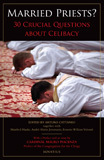 Married Priests?
Married Priests?
Edited by Dom Arturo Cattaneo
Why do Catholic priests not marry? How can celibacy possibly be so
important to the Church, if Jesus did not even require it of his
apostles? In this book, seventeen various experts make contributions,
responding to these and other burning objections, allowing the reader to
discover the value that celibacy has today in the lives of thousands of
priests and seminarians. Also available as an e-book.
Regular price: $16.95, sale price: $13.56
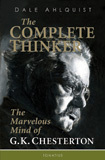 The Complete Thinker
The Complete Thinker
Dale Ahlquist
hat does it mean to be a "complete thinker"? It means being able
to take on a wide variety of ideas and disciplines and put them all
together in a way that they work together. It means thinking like G.K.
Chesterton. Chesterton's thoughts on almost everything-from east to
west, from old to new, from politics to economics, from Shakespeare to
Dickens-are woven together to create an illuminating whole. Also available as an e-book.
Regular price: $17.95, sale price: $14.36
 Be Saints!
Be Saints!
Pope Benedict XVI, Amy Welborn
Pope Benedict tells children that if we grow in our friendship
with God then we will find true happiness and become saints. In this
beautifully illustrated book, popular author Amy Welborn introduces Pope
Benedict's simple yet profound message to children, given during talks
to children his recent visit to England.
Regular price: $14.95, sale price: $11.96
Films
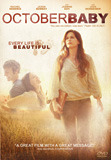 October Baby
October Baby
As the curtain rises, Hannah hesitantly steps onto the stage for
her theatrical debut in college. Yet before she can utter her first
lines, Hannah-unscripted-collapses in front of the stunned audience.
After countless medical tests, all signs point to one underlying factor:
Hannah's difficult birth. This revelation is nothing compared to what
she then learns from her parents: she was actually adopted ... after a
failed abortion attempt. Hannah joins her friend Jason and his group of
friends on a Spring Break road trip, embarking on a journey to discover
her hidden past ... and find hope for her unknown future.
Regular price: $17.95, sale price: $14.36
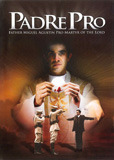 Padre Pro
Padre Pro
This movie is the inspiring story of the famous Father Miguel Pro,
S.J., who was executed in Mexico in 1927 for the crime of being a
Catholic priest. This young Jesuit spent most of his short life in the
priesthood dodging the Mexican police as he ministered to the
underground Church during the Mexican Revolution. Fr Pro's quick wit and
keen sense of humor were put to good use as he pedaled around Mexico
City on his bicycle in various disguises, en route to administering the
Sacraments, giving spiritual talks or begging food and money for the
poor. But behind the disguises beat the heart of a Saint - as the
Mexican people testified by turning out in throngs to pay their last
respects after his martyrdom.
Regular price: $14.95, sale price: $11.96
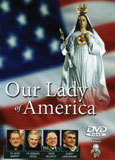 Our Lady of America
Our Lady of America
This important new documentary presents four leading authorities
on the true story of the approved apparitions of Our Lady of America in
the 1950s to an American nun who was a member of the Congregation of the
Sisters of the Most Precious Blood of Jesus. The contents of the
messages, requests and promises of Our Lady, specifically for the people
of America, are urgently important.
Regular price: $10.95, sale price: $8.76
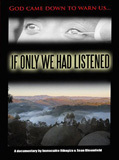 If Only We had Listened
If Only We had Listened
God sent a messenger to Kibeho, Rwanda to warn about the genocide, but few heeded the warning. Immaculée Ilibagiza (author, Left To Tell)
knows the story all too well. Nearly her entire family was killed
during the genocide, and she survived by hiding in a bathroom with seven
other women for three months. Her faith, inspired by the heavenly
messages of Kibeho, kept her alive. Join Immaculée as she returns to
Rwanda to uncover the secrets of Kibeho and to reconcile with her
painful past.
Regular price: $19.95, sale price: $15.96
Quo Vadis
Based on the historical novel, Quo Vadis ranks among the greatest religious film epics ever, with an outstanding cast including Robert Taylor, Deborah Kerr, Peter Ustinov, and Leo Genn. Set in Rome during the reign of the Emperor Nero (Ustinov), Quo Vadis
chronicles the love story between a young slave girl Lygia (Kerr), a
Christian convert, and Marcus (Taylor), a Roman General, while depicting
the larger conflict between Christianity and the corruption of the
Roman Empire.
Regular price: $24.95, sale price: $19.96
Chariots of Fire
Based on a true story, Chariots of Fire is the
internationally acclaimed Oscar-winning drama of two very different men
who compete as runners in the 1924 Paris Olympics. Eric Liddell Ian
Charleson, a serious Christian Scotsman, believes that he has to succeed
as a testament to his undying religious faith. Harold Abrahams Ben
Cross, is a Jewish Englishman who wants desperately to be accepted and
prove to the world that Jews are not inferior. The film crosscuts
between each man's life as he trains for the competition, fueled by
these very different desires.
Regular price: $14.95, sale price: $11.96
Music
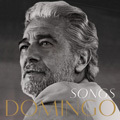 Songs
Songs
Placido Domingo
The beloved tenor fulfills a long desire to record an album of
famous songs that accompanied his life. Domingo invited world-renowned
artists for duets including Josh Groban, Harry Connick, Susan Boyle, Chris Botti, and Katherine Jenkins. Songs include Time After Time, Come What May, Besame Mucho, Eternally, The Girl from Ipanema, What a Wonderful World and eight more.
Regular price: $16.95, sale price: $13.56
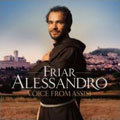 Voice from Assisi
Voice from Assisi
Friar Alessandro
After years of searching for "The Next Great Italian Tenor",
Universal Music surprisingly discovered an amazing young Franciscan
Friar, Alessandro Brustenghi, who lives in the same friary founded by
St. Francis of Assisi. Recorded in the legendary Abbey Road music
studios, this unique and inspirational sacred hymns album truly combines
the best of the old (or ancient) and the new, featuring such classic
hymns as Panis Angelicus, Tantum Ergo, Make Me a Channel of Your Peace, Ave Maria, Pater Noster, Kyrie, Sancta Maria and four more.
Regular price: $15.95, sale price: $12.76
Catholic World Report
The Beginning of the End of the Abortion Industry?
by Tim Drake
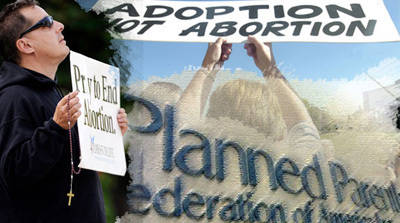
Over the past five years, growing numbers of US abortion workers have left the industry.
For former Planned Parenthood director Abby Johnson, the turning point
came when she was asked to assist with an ultrasound-guided abortion.
“Abortions are typically performed blind,” explained Johnson, who
served as health director for Planned Parenthood in College Station,
Texas. “The doctor takes the suction instrument and probes until he
thinks he’s gotten everything.” On this particular day in the fall of
2009, “the visiting physician wanted to use an ultrasound as a teaching
tool to show us what an abortion looked like,” recalled Johnson. “I was
excited about the prospect of learning something new. My job, during the
procedure, was to hold the ultrasound probe on the patient’s abdomen.”
What Johnson saw on-screen would forever change her life.
Homiletic & Pastoral Review
Preaching to the Whole Person: Classical Wisdom for the New Evangelization
by Fr. Michael Dominic O'Connor, OP
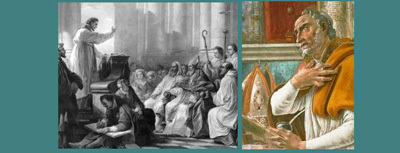
St. Augustine has great insights to offer Christian preachers about the art of good preaching.
“Given the importance of the word of God, the quality of homilies needs
to be improved.” Pope Benedict XVI wrote these words in his 2007
Apostolic Exhortation, Sacramentum Caritatis. The Holy Father then repeated this admonition in his 2010 Apostolic Exhortation, Verbum Domini,
adding: “The art of good preaching…is an art that needs to be
cultivated.” This need is all the more pressing as the Church embraces
the call and challenge of the New Evangelization. A renewed effort on
the part of preachers—to improve the quality of homilies, and to
cultivate the art of good preaching—must be central to the work of the
New Evangelization. The question is: How is this to be done? How can
the art of good preaching be learned and cultivated? This is an age-old
question, and there are some age-old answers to this question which, I
believe, can serve preachers very well in meeting the challenges of
evangelization in our day. St. Augustine is the Church’s foremost
teacher in the classical art of Christian preaching, and it is to him
that we will turn in order to learn something of the classical wisdom on
preaching effectively.
Living Catholic: An Overview
Ignatius Press with My Catholic Faith Delivered is pleased to announce the launch of Living Catholic: Foundations for the New Evangelization, in partnership with his Eminence Cardinal Wuerl of the Archdiocese of Washington, Father Mitch Pacwa and EWTN.
This interactive experience is a short foundational course designed to
reach Catholics looking to learn or re-learn the beautiful truths of the
Catholic faith which we are all called to share as part of the new
evangelization. It is a great diocesan response to the Holy Father’s
call for the Year of Faith! Click the image above to learn more about the Living Catholic course, including a demo video, individual purchases, or parish-wide programs.
The content is based on the Four Pillars of the Catechism and has themes of prayer, parish life and evangelization interwoven throughout. The course can be used parish-wide, individually, or in a small group setting. The My Catholic Faith Delivered system tracks participant learning, answers and usage. This is available in both English and Spanish.
Option 1: The Hybrid Course – Parish and Online
(detailed outlines and online course provided)
• Opening Registration and Online Survey
• Includes a 2-hour opening retreat at the Parish including:
1. Prayer
2. Overview and key objectives
3. Proclamation of the Gospel
4. An overview of salvation history from the Bible
• A four-week online catechetical component will follow covering the core teachings of the Catechism of the Catholic Church.
During these four weeks, parish participants will share faith with
others in the program and engage in simple evangelization opportunities.
• The four-week online portion is followed by a closing event at the parish which includes:
1. Prayer
2. Evangelization training / discussion
3. Additional learning opportunities and next steps
4. Closing Liturgy and Sending
5. Celebration
Option 2: Online Only
• Includes the same online course with content from the Catechism of the Catholic Church
• Father Mitch Pacwa, from EWTN, will present the opening and closing portions in an interactive online format
Pricing
• Individual (Option 1 or 2) - $9.99 per user
• Parish or Group (Option 1 or 2) - $8.50 per user for orders of 100 or more
• Diocese (Option 1 or 2) - $8.50 per user for orders of 1000 or more
• Group Display licenses - $9.99 for the instructor and $5.00 per user
New: "The Will of God: Finding and Fulfilling Your Purpose in Life"
Now available:
The Will of God: Finding and Fulfilling Your Purpose in Life
by Fr. Kenneth Baker, S.J.
• Also available in Electronic Book Format
God created us for a purpose. Each one of us is unique, but each one
has a destiny of eternal happiness. 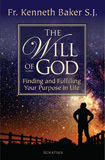 We reach this destiny by freely
We reach this destiny by freely
embracing the will of the God who made us, as it is manifested to us in
the circumstances of our daily life.
This book provides the modern reader with guidance on how to reach
intimacy with God and happiness with him forever by bringing one's life
into conformity with his will. The book consults many sources-the Bible,
the teachings of the Church, and the lives of the saints-and in all
three the formula is the same: Obey God in all things.
In discerning the will of God, there are many questions to consider:
What is the relationship between human freedom and divine Providence?
What good can result from sin and suffering? What is a vocation, and how
does a person hear this calling from God? These questions are
considered in chapters divided according to the verses of Psalm 119,
which praise God's commands as expressions of his will.
All the saints of the Church have this in common: They sought to
discover the Creator's will for them and then tried to accomplish it to
the best of their ability and according to the grace they received from
God. The task of all of us is to do likewise.
Fr. Kenneth Baker, S.J., was for many years the editor
of Homiletic and Pastoral Review, the premiere magazine for clergy and
laity interested in pastoral issues for today's Church. He is the author
of Inside the Bible and Fundamentals of Catholicism.
"Bringing a lifetime of experience in prayerful discernment and sound
theology, Father Baker shows what is meant by God's will, how it is
known, and why embracing it is the key to our holiness. These short
chapters are meant to guide the Christian zealous enough to seek out
God's own desires, yet humble enough to follow them."
- Fr. David Vincent Meconi, S.J., Editor, Homiletic & Pastoral Review
"Father Baker helps us to discover God's will and, what is even more,
important how to live God's will! He uses the Holy Scriptures,the
teaching of the Church and the saints to help us become holy and
transformed into the saints that God created us to be. Read this book
and discover what God wants you to do!"
- Fr. Larry Richards, Author, Be a Man!
"Father Baker has long been known as a sound and wise guide both to the
Bible and to the teachings of the Church. In this book, he relates the
most important themes pertaining to the faith-such as love, suffering,
sanctity, sin, grace, providence, and even the Old and New Testaments-to
the imperative of St. Ignatius of Loyola that we must always strive to
know God's will and perfectly fulfill it."
- Kenneth Whitehead, Author, One, Holy, Catholic and Apostolic
40% off Rose Trabbic's "Employee Pick of the Week"

40% off Rose Trabbic's Pick of the Week*
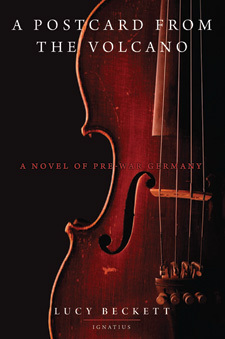 The book I recommend is
A Postcard from the Volcano.
The book I recommend is
A Postcard from the Volcano.
This was one of the first books I worked on when I started to assist
with publicity for Ignatius Press, and one of the first Catholic novels I
ever read. I also have fond memories of the book because the author,
Lucy Beckett, was such a pleasure to get to know!
A Postcard from the Volcano combines beautiful prose with
moving insights into the powerful impact that the world wars had on the
lives of individuals and on whole countries. Beginning in 1914 and
ending on the eve of World War II, this epic story follows the coming of
age and early manhood of the Prussian aristocrat, Max von
Hofmannswaldau. From the idyllic surroundings of his ancestral home to
the streets of cosmopolitan Breslau menaced by the Nazi SS,
Hofmannswaldau uncovers the truth about his own identity and confronts
the modern ideologies that threaten the annihilation of millions of
people. A Postcard from the Volcano opens with the outbreak of
World War I and the Prussian pride and patriotism that blind the noble
von Hofmannswaldau family to the destruction that lies ahead for their
country. The well-researched narrative follows the young count as he
leaves home to finish his education and ends up a stranger in the land
of his birth.
Not only did I enjoy reading this suspenseful novel (I could barely put
it down and read it in a couple of days), I also learned a lot of
fascinating history about the World Wars. It is also a novel that leaves
the reader with soul-searching questions – what would I have done if I
lived at that time in history? – and also
 inspires one to fight against
inspires one to fight against evil situations in our own time. A Postcard from the Volcano is also available as an e-book and audio download.
Rose
Trabbic is the publicist for Ignatius Press. She works from home in Ave
Maria, FL, where she lives with her husband Joseph, a philosophy
professor at Ave Maria University, and two young daughters.
*Employee
Pick of the Week program features savings of 40% off a book, movie, or
compact disc personally chosen and recommended by an Ignatius Press
employee. Each week, an Ignatius Press employee will select a favorite
book, movie, or other Ignatius Press product and write a few sentences
about why he or she thinks customers will enjoy the particular
selection. A short bio of the selecting employee will also be included,
giving customers a chance to learn a bit more about the people who are
Ignatius Press.
October 31, 2012
The Pastoral Mandate, Politicians and Religious Liberty
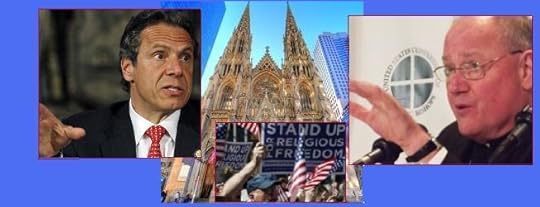
The Pastoral Mandate, Politicians and Religious Liberty | Joe Tremblay | Homiletic & Pastoral Review
Is this threat to religious liberty a political problem, or is it a pastoral problem?
On January 19th, 2011, EWTN’s The World Over with Raymond
Arroyo aired an interview with New York’s Archbishop Timothy Dolan. To
his credit, Raymond Arroyo represented the concerns of many Catholics by
asking the Archbishop about his pastoral position on discipline as it
pertained to New York Governor, Andrew Cuomo. As most viewers know,
Cuomo had long been an unapologetic advocate of abortion rights. In June
of 2011, however, he took his public dissent from Catholic teaching to
yet another level. The governor signed a bill making same-sex marriage
legal in the state of New York. Cuomo, mind you, is a highly visible
public figure who calls himself a “Catholic” and one who attends Mass
from time to time. Accordingly, Raymond Arroyo asked where the governor
of New York stood in relation to the Church to which he professed
allegiance. Archbishop Dolan answered by saying that the talks between
him and Cuomo are on-going, maintaining: “Our job is to invite people in
and try to patiently change hearts—and not be throwing people out” (New York Daily News June
17th 2011). I think it is fair to say that many U.S. bishops,
especially in several of the archdioceses in the United States, concur
with Archbishop Dolan on this form of dialogue.
Religious Liberty
The next day, January 20th, the Catholic News Agency reported
that “the Department of Health and Human Services secretary Kathleen
Sebelius announced that the administration would not expand a religious
exemption for employers who object to its ‘preventative services’
mandate.” In other words, the Obama administration made it known that
they would mandate that, against their will, Catholic agencies must
provide abortifacients, contraception, sterilization, etc., in their
health care coverage. In fact, these Catholic agencies have until August
of 2013 to comply with the federal health care mandate. Archbishop
Dolan did not mince words when he told the press what he thought of it.
He said: “In effect, the president is saying we have a year to figure
out how to violate our consciences.” In fact, a day earlier the Holy
Father weighed in with these sobering words: “No one who looks at these
issues realistically can ignore the genuine difficulties which the
Church encounters at the present moment.” Indeed, Pope Benedict’s
“Dictatorship of Relativism” is on the march in America.
Asking Important Questions
The question then becomes: Is this threat to religious liberty a political problem, or is it a pastoral problem?
A Scripture Primer for a Skeptical Age
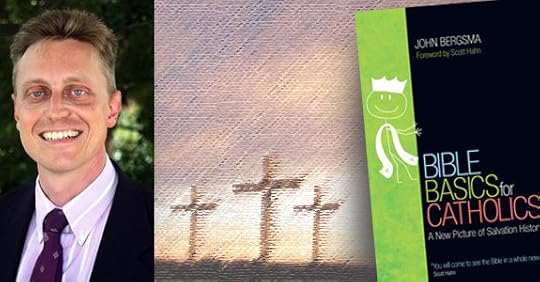
A Scripture Primer for a Skeptical Age | Thomas P. Harmon | Catholic World Report
John Bergsma’s new introduction to the Bible is concise and accessible, with a humorous touch.
There
is a lovely early American hymn entitled “Fulfillment” that begins,
See how the Scriptures are fulfilling,
Poor sinners are returning home;
The time that prophets were foretelling,
With signs and wonders now is come.
The gospel trumpets now are blowing
From sea to sea, from land to land;
Much
of the exuberance of the early Christians stemmed from the extraordinary realization
that the Scriptures had been fulfilled within their lifetimes and in their
sight (one is tempted to say, right under their noses). Their exuberance is present in Peter’s speech
to the crowds on Pentecost, when he points out Christ’s fulfillment of the
promises given to David with a chain of references to the Prophet Joel and the
Psalms (Acts 2:14-36); it’s also present in Paul’s speech in the Synagogue in
Antioch, where Paul shows that Christ is the fulfillment of God’s dealings with
Israel from Moses to David (Acts 13:13-41). Christ’s words in Matthew 13:17
nicely capture the bewilderment of the early Christians that so many of their
fellows remained unmoved: “Truly, I say to you, many prophets and righteous men
longed to see what you see, and did not see it; and to hear what you hear, and
did not hear it.”
The
message that Christ fulfilled the Scriptures was the bedrock of the early
Christian mission to the Jews and the source of much of their energy. That
exuberance has continued to be vital force in the Church ever since. But the
message that Christ fulfilled the Scriptures has been obscured in recent years.
The modern methods of interpreting the Bible, often subsumed under the heading
of “the historical-critical method,” have given us many good things. We know
more about biblical times, the languages of the Bible, the natural and
architectural environment of the Bible, etc., than we ever have before. At the same time, those discoveries have been
bought at a price. The historical-critical method proceeds by breaking up the
Bible into its constituent parts, examining texts and parts of texts for their
source, form, and context. The underlying assumption of most
historical-critical scholarship is that, not only can we not rely on the divine
inspiration of Scripture to provide unity to the Bible, but even the individual
books and parts of individual books are the result of random, subrational
processes. We cannot, therefore, find unity in the books of the Bible even on
the human level. The result is that, when the unity of the Bible is denied, so
also is its intelligibility. It is no wonder so many contemporary people find
Christianity unbelievable when a large percentage of those who spend their
lives studying the Bible think that it is unintelligible.
File under: Oh, now you tell us!
The New York Times reviews the new book, Leonardo and The Last Supper, authored by Ross King, and alerts the world to this little news flash:
Mr. King deftly situates the painting in a historical context — against
political events in Italy at the time, religious attitudes of the day
and contemporaneous developments in art — and also places it in the
context of Leonardo’s career, deconstructing the ways the painter broke
with tradition and stamped a familiar and much depicted subject with his
distinctive vision.
There isn’t much that’s substantially new in the book — Mr. King appears
to draw heavily on the work of Mr. Clark and other Leonardo experts,
like Martin Kemp, as well as on Leonardo’s writings — but he does a
fluent and insightful job of weaving together all his research.
On several much-debated issues, Mr. King does not hesitate to serve up
his opinions. He asserts that the girlish-looking figure sitting on
Jesus’ right is John — not Mary Magdalene, as a character in Dan Brown’s
best seller "The Da Vinci Code" famously argued. John, Mr. King contends, was traditionally portrayed
as “a youthful and slightly feminine figure among his mostly bewhiskered
and older companions.”
He says that one of Leonardo’s sketches played with “the idea of placing
John asleep on Christ’s breast” — the way he was often traditionally
depicted at the Last Supper — but that Leonardo ended up having John
lean toward Peter instead in order to isolate Jesus spatially in the
composition.
When the Times reviewed Brown's mega-selling novel almost ten years ago, however, it somehow overlooked the, uh, significant liberties taken in the pulpy volume with art history—not to mention Scripture, Church history, theology, and much more—describing it as a "riddle-filled, code-breaking, exhilaratingly brainy thriller" and a "gleefully erudite suspense novel". Sure, the novel rushes breathlessly to "the brink of overkill", but no need to question anything in it, as "in the end Mr. Brown gracefully lays to rest all the questions he has raised." (in fact, the ending of the novel is the clunker to outclunk all clunkers). What Mr. King says is correct; in fact, there isn't an actual act historian worth his weight in pigments and paint brushes who would thinks otherwise. As Sandra Miesel and I wrote in The Da Vinci Hoax:
The grouping of John, Judas, and Peter is purposeful. The group [of three]
at Christ’s right, John, Judas, and Peter", Steinberg points
out, "clusters the three who are destined for roles in the Passion."
Judas betrays Jesus, Peter denies Jesus, and John–"the disciple
whom Jesus loved" (Jn 13:23;19:26; 20:2; 21:7, 20)–was the only
apostle to stand at Jesus’ cross (Jn 19:26-7). Steinberg states that
there are also "significant pairs" in the painting, including
Peter and John, and Jesus and John. Peter and John are often companions
(cf. Lk 22:8), and personify "the active and contemplative life"
and are "shown putting their heads together". Hearing the prophecy
of impending betrayal, Peter lunges forward, his hot temper and desire
to defend his Master evident. John is the quiet, reflective contemplative
who internalizes the distressing news, his hands folded in a prayerful
manner appropriate to the coming death of Jesus. These two true apostles
frame Judas, the traitor, who personifies greed and disloyalty. Although
Jesus and John are depicted as being apart from each other, their mirrored
images indicate that they are "soulmates . . . matched in outline,
in (original) hue of garment and tilt of head."
Viewing a reproduction of the painting, Sophie sees "flowing red
hair, delicate folded hands, and the hint of a bosom" (243). The
figure is undoubtedly effeminate, as Leonardo depicted the youthful
John in the early-sixteenth-century Florentine style. This approach can
be seen in other paintings of the period, including Leonardo’s own
Saint John the Baptist (c. 1413-16), which depicts a young man
who is quite effeminate in appearance and also has flowing hair and delicate
hands. As for the "hint of bosom", it can only be found in the
feverish imagination of those subscribing to Brown’s theory–Leonardo’s
painting reveals no "hint" at all, unless viewers are willing
to see what Brown suggests they see, despite lack of visual evidence.
There is no suggestion, in Leonardo’s sketches or writings, that
the figure is Mary Magdalene. There is, however, evidence that is the
apostle John. In a sketch for the painting, Leonardo depicts John "leaning
over, face down; Christ resting one arm on John’s back as he turns
toward Judas . . ."
The point is this: almost a decade after Brown's novel came out, The Da Vinci Code is cemented as a cultural landmark, to the degree that countless stories about art and religion now make reference to it, as if one must bow low before the silly piece of literary trash before entering the halls of history. One might say it is a situation of the tail wagging the dog, but it's even worse, because the tail doesn't even exist. Still, on the bright side, it's nice that the Times finally got around to curtailing its original enthusiasm about The Da Vinci Code, even if years too late and far too indirectly.
October 30, 2012
The Pope, the Blind Man, and the New Evangelization
“The interpretation [of St. Augustine]
that Bartimaeus was a man who had fallen from a condition of ‘great prosperity’
causes us to think. It invites us to reflect on the fact that our lives contain
precious riches that we can lose, and I am not speaking of material riches
here.”
— Pope Benedict
XVI, Homily, October 28, 2012.
The
homilies of the Pope Benedict XVI are always distinguished by the many levels
at which he addresses us. This pope is a teacher; he is a scholar. He always
tells us the context of what he is talking about. He speaks on the matter at
hand, usually the text in the Mass he is celebrating. For the Mass at the end
of the Synod, which is the Mass of the Thirtieth Sunday of the year, the text
of the Gospel concerns one Bartimaeus, a blind man whom Christ encounters
outside of Jericho.
In the
structure of Mark’s Gospel, Benedict tells us, this curing of Bartimaeus’
blindness occurs at an important point. “The whole of Mark’s Gospel is a
journey of faith, which develops gradually under Jesus tutelage.” In one
sentence, we are given the whole scope of this particular Gospel. The first
“actors” on this journey are the apostles themselves. Evidently, they are being
taught something that they may not be aware of. The journey or pilgrimage is to
the Holy City. Jesus is now going there. He knows what is in store for Him. He
is with some disciples and many people.
These
people will be the ones who later “recognize” Him as the Messiah as He rides
into the Holy City when He arrives there. Bartimaeus is begging by the side of
the road. He is blind. The healing of Bartimaeus is the “last miraculous
healing before Jesus enters His passion.” Here Benedict tells us it is not an
“accident” that the man is blind. “We know from other texts that the state of
blindness has great significance in the Gospels. It represents man who needs
God’s light, the light of faith, if he is to know reality truly and to walk the
path of life.” God is light. Darkness is to lack light, not to know, to
disbelieve. That is a remarkable sentence. If we are to know “reality,” if we
are to know what is, we need, in addition to our minds (but not apart from
them), faith, trust in the Word, in the Light. It looks like the man who does
not have faith does not know reality. We will remain blind without the light of
faith, even if we see.
Bartimaeus
is a model. “He represents the man who has lost the light and knows it.” Others
lose the light and refuse to acknowledge it. This sentence foreshadows the
context of the Synod on the new evangelization. It is directed precisely at
those who once had the faith and seem to have lost it. The Church has realized
that its own mission is hindered precisely by the vast numbers of Catholics in
the “developed” world who have lost or do not practice their faith. They have,
as it were, blinded themselves.
Bartimaeus,
in the Gospel account, simply says: “Jesus, Son of David, have mercy on me.”
When Christ asks him what he wants, he replies: “Lord, that I may see.” What
are we to make of this response? “Bartimaeus represents man aware of his pain
and crying out to the Lord, confident of being healed.” Benedict notes that
this plea, “Lord, that I may see,” like the publican’s, “Lord, be merciful to
me a sinner,” has become a part of the Church’s own prayer. Bartimaeus teaches
us that our path is to follow Jesus on our journey. We too pray that we may
see.
St.
Augustine, whom Benedict habitually cites (partly because Augustine commented
wisely on almost everything) suggests that Bartimaeus was a man who once was
rich but had lost his riches. He is now wretched because of his blindness. His
cure restored his fame and riches in another way. Benedict says: “This
interpretation, that Bartimaeus was a man who had fallen from a condition of
‘great prosperity,’ causes us to think.” Think about what? Many were
“evangelized long ago.” The light of faith has “grown dim and people have
drifted away from God, no longer considering him relevant for their lives.” Who
else could the pope be talking of but the western European Catholics?
These
people have lost their real riches. “They are the many in need of the new
evangelization, that is, a new encounter with Jesus, the Christ, the Son of God.”
The pope never talks of abstractions here. The encounter is not with ideas, but
with the Son of God, nothing less. This biblical passage speaks to us as we
grapple with the need to proclaim Christ anew in places where the light of
faith has been weakened, in places where the fire of God is more like
smoldering cinders, crying out to be stirred up.” This evangelization applies
to the “whole Church, even to “ordinary pastoral ministry"; the
sacramental journey is where we encounter the Lord’s call to holiness,
addressed to all Christians.” The examples of the saints are the main
“protagonists” of this new evangelization.
The Church
is also concerned with “the message of salvation to those who do not yet know
Christ.” The pope adds a principle that is difficult to carry out in many
political jurisdictions: “All people have a right to know Jesus Christ and his
Gospel; and all Christians…have the corresponding duty to proclaim the Good
News.” The Church is also concerned with “the baptized whose lives do not reflect
the demands of baptism.” The Church seeks those who “have drifted away or are
seeking the meaning of life, happiness, and, ultimately, God.” We are, thus, to
“put away all blindness to the truth….” We seek those who have lost their
faith. This is a vast number. This loss of faith has made the evangelization of
other much more difficult, both because of loss of manpower and loss of example
and tradition. The blind man at Jericho has become the symbol of those who were
once blind but now see. The pope suggests that our world is now full of those
who are blind but who do not choose to see. The blind man tells us that they do
not have to choose this way.
Irish Priestly Vocations in Worrying Decline
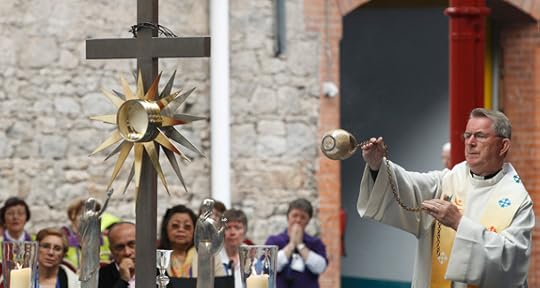
Irish Priestly Vocations in Worrying Decline | Michael Kelly | Catholic World Report
Number of priests projected to shrink by 75 percent in the next 30 years.
For a week last June, the International Eucharistic Congress, held in
Dublin, was a beacon of light and vibrancy that Irish Catholicism has been
sadly lacking in recent years. Almost two decades of clerical abuse scandals,
bishops resigning for failing to protect children, and an often-hostile media
reveling in the Church’s misfortune have taken their toll.
The Eucharistic Congress afforded Irish Catholics the opportunity to come
together and celebrate their common faith. Archbishop of Dublin Diarmuid Martin
said “the extraordinary interest that was shown for the workshops and
catecheses of the Congress tells us just how much thirst there is in our
Catholic community to deepen the understanding of our faith.”
The Dublin Eucharistic Congress provided a striking counterbalance to a
creeping narrative that sees Irish Catholicism in terminal decline.
Irish Catholics have shown a resilience in the face of aggressive
secularism and Church failings that has surprised many.
“More than one-third of Irish Catholics attend Mass every week,” says
David Quinn, director of the Iona Institute, a pro-religion think-tank. “Of
course, we’d like it to be higher, but that is a large base to build on.”
However, at the same time, a recent survey found that 75 percent of Irish
Catholics say the Church’s teaching on human sexuality has no relevance to
them. This, Quinn believes, points to the need for the Church to work harder to
get its message across. “Priests need support so that they can preach what the
Church teaches,” he believes.
But priests in Ireland are becoming few and far between. And as hundreds
of priests die or retire in coming years, who will take their place? Who will
be there to quench the thirst that Archbishop Martin speaks of or celebrate the
Eucharist?
October 29, 2012
Religious Freedom: A View From Across the Pond
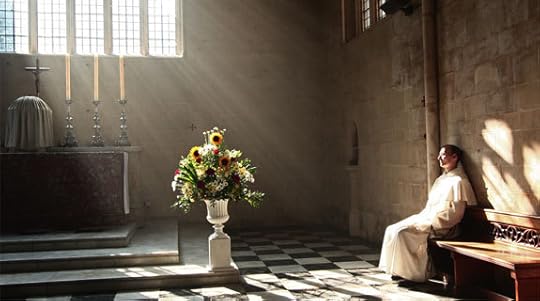
Religious Freedom:
A View From Across the Pond | Joanna Bogle | Catholic World Report
Vatican II’s
Declaration on Religious Freedom is just as timely today as it was fifty years
ago.
Religious freedom
is the issue of the hour: in America, in Europe, in what we (used to?) think of
as “the West”. But what is particularly interesting is that this comes just as
we are marking the 50th anniversary of the opening of the Second
Vatican Council – the Council in which the Church explored the whole question
of religious freedom and gave the world a valuable document which established
the Church’s approach to this subject for the new millennium.
The Declaration on
Religious Freedom, Dignitatis Humanae, emphasised that “all men are bound to seek the truth,
especially in what concerns God and His Church, and to embrace the truth they
come to know, and to hold fast to it.” This duty is fundamental. Religious
belief cannot be imposed by government edict, or by coercion using the
authority of the State. “The truth cannot impose itself except by virtue of its
own truth, as it makes its entrance into the mind at once quietly and with
power.”
When this was all
being debated at the Vatican Council, and in the years immediately following,
attention focused essentially on the internal tensions within the Church on the
subject. But now the fullness of the importance and value of Dignitatis
Humanae is coming into its
own, and in circumstances that would have been unimaginable to many of the
Bishops gathered in Rome in the 1960s.
Critics of Dignitatis
Humanae, and in particular
those who support the line taken by the late Archbishop Lefevbre and his
followers, claim that it dishonours God because it is necessary to insist the
Church must be enshrined in the fabric of the State.
The reality of
things, however, has proved the prophetic and powerful value of the Declaration
on Religious Freedom: its true importance is perhaps only now emerging, as we
see what it achieved in the 1970s and 80s, and what it means for us today, and
tomorrow.
From Communism
to Contemporary Crisis
For this writer,
based in London, issues of freedom and human rights have taken a new turn in
recent years. At one time, religious freedom was an issue that chiefly
concerned people living in Eastern Europe or the old USSR – what we used to call
the “Communist bloc”. We all knew the history: from 1917 onwards, Christians
suffered under atheist regimes centred on a Marxist creed, and here were
numbers of martyrs – bishops, priests, poets, academics, campaigners for
workers’ rights, and ordinary faithful Christians who simply wanted to live out
their faith and pass it on to their children. A Christian in the West could
help only by prayer, expressions of solidarity, efforts with various
underground support networks, and so on.
Continue reading on the CWR site.
Carl E. Olson's Blog
- Carl E. Olson's profile
- 20 followers



